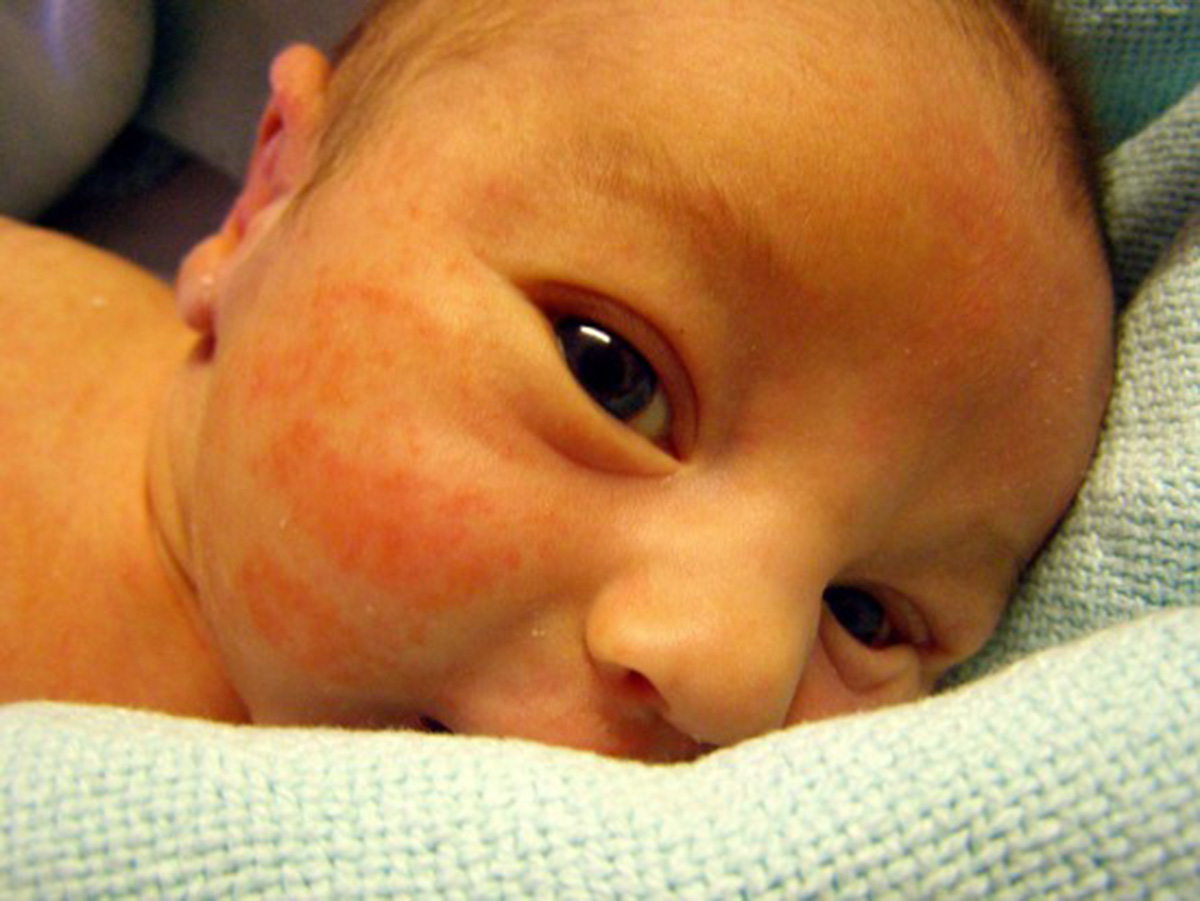Table of Contents
Scarlet Fever is a disease caused by a bacterium that belongs to the Group A Streptococci family. The bacterium in question is called Streptococcus Pyogenes. Scarlet fever rash is the rash that children with strep throat generally have. The bacteria produces a toxin that attacks the skin, resulting in a rash. At first, the rash seems to be a very bad sunburn, with only tiny bumps. But as the disease process progresses, the rash starts to spread on the face, head and neck, as well as the chest and the back. Eventually, the rash is present on the entire body.

Impetigo Rash
Impetigo rash can be caused by two main bacteria: Staphylococcus Aureus or Streptococcus Pyogenes. The rash starts as a red sore close to the nose or the mouth, which breaks and leaks bacterial particles all around, causing more sores to develop. It may affect the skin anywhere on the body, but most of the time the blisters develop on the neck, hands, diaper area and in the face. And if the skin is already subject to topical irritation (allergies, itching creams, pimples, etc.) the risk of developing impetigo climbs. The impetigo rash is not painful, but it’s itchy. It is also very contagious, so it is definitely something to worry about. Unlike other rashes, the impetigo rash can actually be treated with antibiotics therapy.
Roseola
Also known as the sixth disease, roseola is actually a rather mild illness. It is caused by the human herpes virus 6. Initially the child seems like he has a cold, but the fact that he develops an extremely high fever (around 101F) is a red clue that something is wrong. The high fever ends abruptly, and as soon as it does the rash develops. It looks like flattened and lightly raised bumps, of a pinkish color (hence the name “roseola”, which comes from “rose”, pink in the French language).
Hives Rash
Depending on how intense the allergic reaction is, the rash could be significant or not. It can be triggered by many things like food, latex, certain type of clothes fabrics, insect stings, medications, etc. The rash is usually short-lived (it lasts three to four days) and mild and can be controlled with antihistaminic medications. A hives rash presents as erythematous raised plaques.
Molluscum contagiosum rash
This is another common childhood rash, caused by a virus. It takes the form of small, raised bumps on the surface of the skin, around 2 to 5mm wide. The rash could be pale, pale pink, flesh colored or yellowish, depending on the skin color of the individual. The bumps have a dent in the center, and may be tender or slightly itchy. In general, they would disappear without treatment within a few weeks, or may persist (only in rare cases). So this is another rash that is worth your attention.
Read More: Scarlet Fever in Children
When should you worry about a rash?
You should see your doctor if:
- The rash comes with a fever;
- The rash has been infected;
- The rash is painful;
- The rash comes with some dizziness or fainting;
- The rash started after taking some medications;
- The rash lasts for more than 3 days;
- The rash comes with difficulties breathing;
Your medical practitioner would be the best person to provide you with assistance and re-assure you.
- Mindmap by steadyhealth.com
- Photo courtesy of Jim Champion by Flickr : www.flickr.com/photos/treehouse1977/3316752569/
- www.nhs.uk/conditions/skin-rash-children/Pages/Introduction.aspx
- www.quickanddirtytips.com/health-fitness/mens-health/when-should-you-worry-about-rash?page=all
- www.parents.com/baby/health/rashes/rashes/
- http://kidshealth.org/parent/infections/skin/chicken_pox.html#


Your thoughts on this